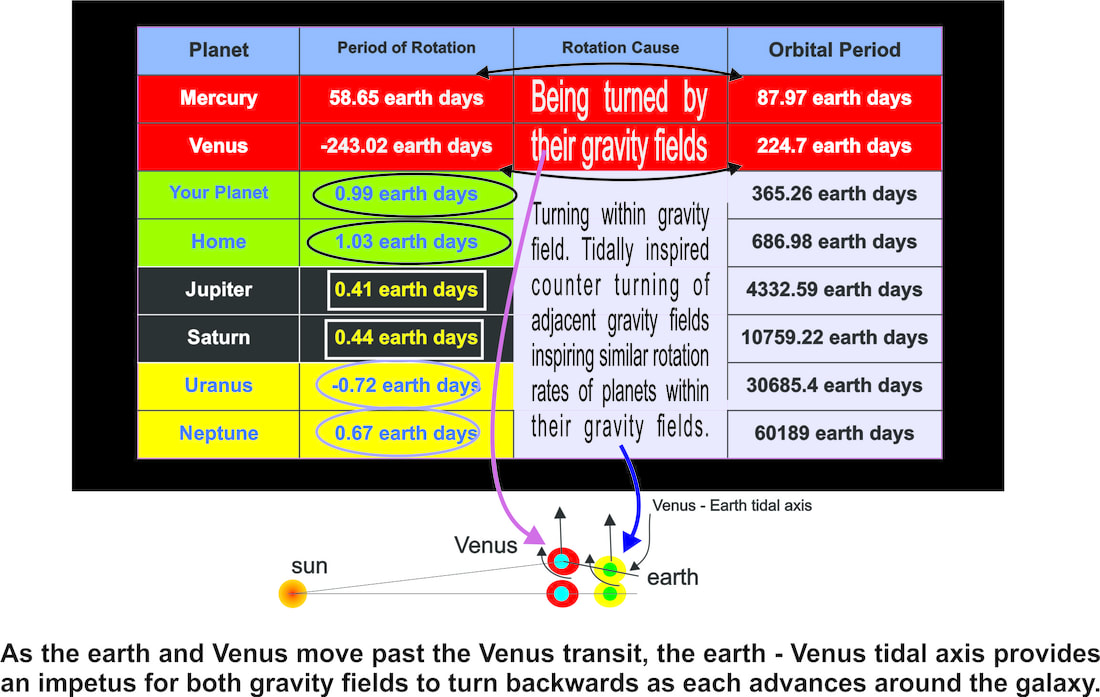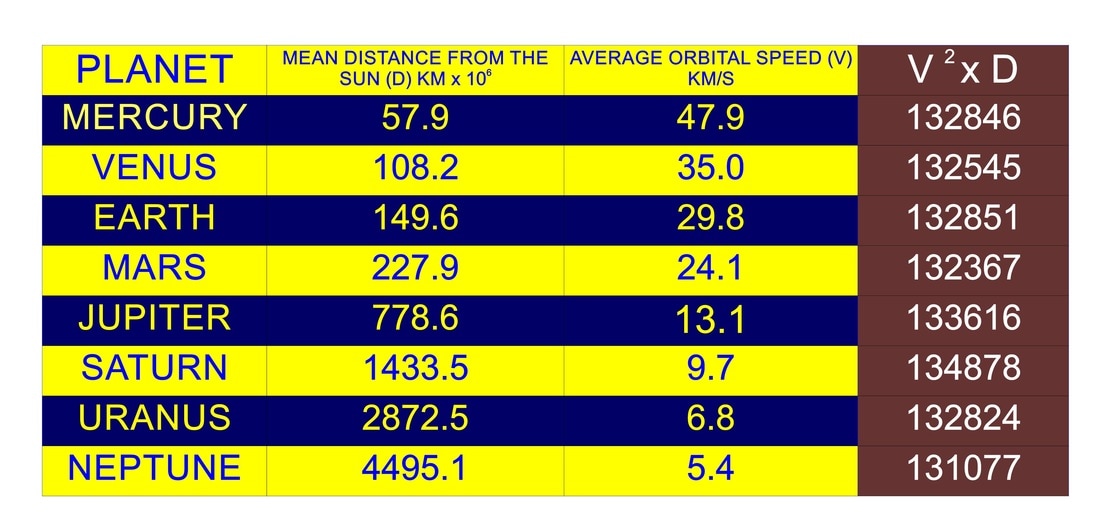**** Day Lengths. week 10
Up in the mornin' and out to school
The teacher is teachin' the Golden Rule
Well good morning moving inverse square professors. There is 24 hours in an earth day. There is also 24 hours in our Mars day.
And this morning you have Martians filling in as a flight path to rotation rates impostor professor. What we will be doing this morning is considering a Mars-earth 24 hour system.
And this morning you have Martians filling in as a flight path to rotation rates impostor professor. What we will be doing this morning is considering a Mars-earth 24 hour system.
Professors, earth garden path planetary motion professors will get to have more idea if your moving sun Copernican update ever sees the light of one of your beautiful earth days.
Apart from a transit being an alignment of two planets with the sun, the things for you to note are the inner two planets are like the moon. Have rotation periods of the order of their orbital periods. And outer adjacent planets are pairs with similar rotation periods. Thus the rotation aspect you can see on this table.
If you can note that and can consider the rotation aspect to be a possible ingredient of our solar system, it's all pretty interesting for a moving inverse square law earth professor. The same face of your moon always being towards your beautiful earth is a pretty good clue to your moon being turned by the tidal quadrant of its gravity field. The inexactness of the elements of the rotation aspect for the planets, well the rotations are going to be conflict rotations of inverse square laws between planets. Not just a locked synchronisation with one other planet.
Now, you can look it up or work it out yourself. Venus turns backwards on its axis once whilst this fixed sun professor planet you are on does 2/3's of its solar cycle. And, every 584 earth days, the same face of Venus is almost precisely towards your beautiful planet when Venus passes between you and the sun. There are a few other little rotational/cyclical near exact ratios between the inner three planets as well. You'll find them when you do your research and investigations.
So professors, when you get to see the tides of a planet as equal and opposite, in time you should see that, minus a moon or moons, the solar low tide axis of a planet becomes a circle around the motion of the sun at a planet's distance from the sun.
Then, if your earth - moon high tides run through the Venus inverse square law during a transit, the low tide axis of the earth - sun system gets marginally shifted out of this circle toward the 'orbits' of the next planet in and the next planet out as your earth moves forward.
At the same time the Venus inverse square law is being turned backwards as Venus and your beautiful earth move forward.
If you get some spare time after your chores tonight, you could do worse than having a go at it.
It's complex.
It appears that your beautiful earth's lunar tides are really solar tides but are getting moved around your beautiful earth by your moon.
Naturally Martians filling in will never get much worthwhile done while here on your beautiful planet until you disclose where your toilet is. Alternatively, you do sort of need a spatial picture of the structure of an inverse square law field in your head first for all this. Euclid or Sir Isaac may be able to help you out with that in a few weeks time.
Professors, if these diagrams have meaning, their key is the different relative speeds of the 'orbit' hopping tidal axes. As the inner planet moves a quarter of its way around the sun, the axes move from a high tide axis to mid tide axes for the outer planet. And the tangent approximates being the true low tides axis of an inner planet. And also sorry about the stupid anus joke. It seems to have slipped in from the fart class that's going on next door.
Professors of the fixed sun variety, it pains us Martians to say this. Until you are having a crack at similar and synchronised rotation rates of adjacent planets, you to are impostor professors. To explain this further, you do in fact have a condition known as ETA. So impostor professors, please treat yourselves and each other kindly. At this stage there is no known cure for Extreme Truth Aversion. Hold each others hand as you cross the road.
The unfortunate side of this ETA condition is it can cause Sir Isaac Newton induced thoughts about Johannes Kepler's three laws of planetary motion. As you know, the sun is still fixed for him.
Professors of the fixed sun variety, it pains us Martians to say this. Until you are having a crack at similar and synchronised rotation rates of adjacent planets, you to are impostor professors. To explain this further, you do in fact have a condition known as ETA. So impostor professors, please treat yourselves and each other kindly. At this stage there is no known cure for Extreme Truth Aversion. Hold each others hand as you cross the road.
The unfortunate side of this ETA condition is it can cause Sir Isaac Newton induced thoughts about Johannes Kepler's three laws of planetary motion. As you know, the sun is still fixed for him.
- The orbit of a planet is an ellipse with the Sun at one of the two foci.
- A line segment joining a planet and the Sun sweeps out equal areas during equal intervals of time.
- The preferred flight path to rotation rates layout of Kepler's third law is below.
Professors, Kepler's third law says nothing but a planet's speed relative to the sun is a consequence of the sun's inverse square law, not a consequence of some original momentum or whatever your ETA condition is still unfortunately spewing out to your unsuspecting classes. How Sir Isaac was originally so stupid to miss this you may never know.
Well you might. Sir Isaac was a frenzied English mathematician trying to bluff his peers into an abstract fixed sun intellectual utopia between Italy's inertial circles and Germany's elliptical U boats. Did we mention your war.
So professors, the understanding of these three laws will have the motion of the sun's inverse square law field completely factored into the three laws. The basic explanation of the third law is almost undoubtedly that all descents due to gravity are curving relative speed changes. The explanation of the ellipse is likely to be found in the rotation rate table. That is Kepler's third law is causing the second law and the first law is just a statement in deference to a perfect circle around a fixed sun. It is interesting stuff for a genuine moving sun earth professor.
Yes. Rotation rates entering Kepler's work maybe a chance to flick your world away from presenting an original apple bang into the minds of children as the reason of the universe. Allowing rotation rates/day lengths to check into your celestial outlook would be rather good. The thing to remember is all these diagrams are travelling at 220 km/sec. Or some such speed. They are diagrams of the positions of adjacent planets a quarter cycle after an inner planet's transit of the next planet out. If a moving inverse square law professor can get on top of rotation rates, you will illuminate this planet of yours. These are all scale diagrams minus the ellipses and minus the angle of the path of the sun to the paths of the planets. They all have a curious approximate tangent or true low tide axis. And, interestingly, after a quarter cycle, the earth - Venus tide axes in question are very close to a right angle whilst the Venus 'orbit' of the sun is the one closest to that of a circle. Be interesting if right angles approximately appear when the ellipses are factored in.
Well you might. Sir Isaac was a frenzied English mathematician trying to bluff his peers into an abstract fixed sun intellectual utopia between Italy's inertial circles and Germany's elliptical U boats. Did we mention your war.
So professors, the understanding of these three laws will have the motion of the sun's inverse square law field completely factored into the three laws. The basic explanation of the third law is almost undoubtedly that all descents due to gravity are curving relative speed changes. The explanation of the ellipse is likely to be found in the rotation rate table. That is Kepler's third law is causing the second law and the first law is just a statement in deference to a perfect circle around a fixed sun. It is interesting stuff for a genuine moving sun earth professor.
Yes. Rotation rates entering Kepler's work maybe a chance to flick your world away from presenting an original apple bang into the minds of children as the reason of the universe. Allowing rotation rates/day lengths to check into your celestial outlook would be rather good. The thing to remember is all these diagrams are travelling at 220 km/sec. Or some such speed. They are diagrams of the positions of adjacent planets a quarter cycle after an inner planet's transit of the next planet out. If a moving inverse square law professor can get on top of rotation rates, you will illuminate this planet of yours. These are all scale diagrams minus the ellipses and minus the angle of the path of the sun to the paths of the planets. They all have a curious approximate tangent or true low tide axis. And, interestingly, after a quarter cycle, the earth - Venus tide axes in question are very close to a right angle whilst the Venus 'orbit' of the sun is the one closest to that of a circle. Be interesting if right angles approximately appear when the ellipses are factored in.
Professors, before your garden path planetary motion professor cranks up again, you could whack the various ellipses on and have some fun with it. The interesting thing is the tangent from an inner planet is directed in the region of the next planet out a quarter cycle beyond the transit of the inner planet.
The way the planets are always tending towards a complete alignment suggests the inverse square laws of the planets are a tension within the motion of the sun's inverse square law.
On one hand the planets have the relative speed that the motion of the sun's inverse square law supplies at a planet's distance from the sun. (Kepler's third law)
On the other, adjacent planetary inverse square laws are tidally pushing on each other with their various relative speeds within the motion of the sun's inverse square law and inspiring mutual relative speeds for each other.
These inspirations appear as the rotation rates of the planets and the ellipses (Kepler's second law). Maybe anyway. Moving inverse square law professors will work it out. Pluto's inverse square law seems to be marginally outside the tension. Not sure. Conjecture about his relationship with Brahe aside, that Johannes Kepler of yours had beauty to match your planet. Not really your Bode perspective, but the distances of the planets from the sun looks like being to do with each other and it's likely to be the planets that are to do with the turning of the sun's inverse square law but who knows. So many questions. Is a planet's inverse square law its axis of rotation? Do the core's of planets turn with their inverse square laws? Does the speed of the sun control day lengths. etc, etc.




















